

Aeschynanthus decorates our homes thanks to its magnificent blooming from May to September.
List of Aeschynanthus facts
Name – Aeschynanthus
Family – Gesneriaceae
Type – perennial, indoor plant
Height – 12 to 16 inches (30 to 40 cm)
Exposure – well-lit
Soil – rather acidic
Foliage – evergreen
Flowering – May to September
Planting, care, watering and repotting, are parameters that influence and lead to successfully growing aeschynanthus.
It is recommended to plant the rhizomes in spring in a blend of garden soil and heath soil.
Many species are epiphytes, meaning they usually grow on trees, like orchids. For these, prefer orchid potting mix.
Repot in spring, generally April does the trick.
Favor a bright spot but without direct sunlight, especially during the hottest hours.
You can put saintpaulia in the immediate vicinity of this plant because they both share the same growing conditions.
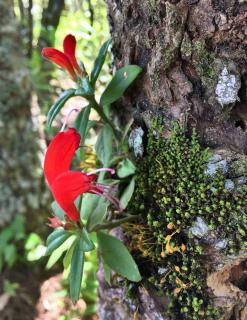
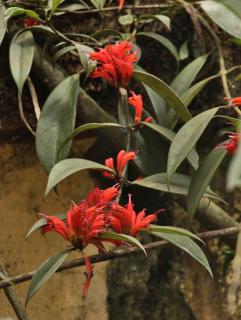
If your plant is not blooming, it is probably because not all ideal growing conditions are brought together.
Place in bright light and don’t let it catch a cold in winter.
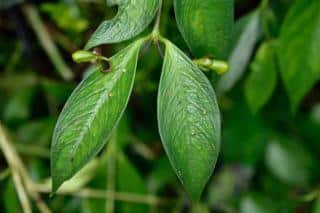
It is most important to water more during the blooming which is from May to September, and have a rather drier period during the winter months.
That is how to best mirror the 2 major seasons in tropical areas: monsoon season and dry seasons.
So this means watering twice a week in summer, with liquid fertilizer added in every 10 or 15 days. Over the rest of the year, water sparingly, not more than once a week. This dry dormant state, while still receiving a lot of light, is what will guarantee reblooming.
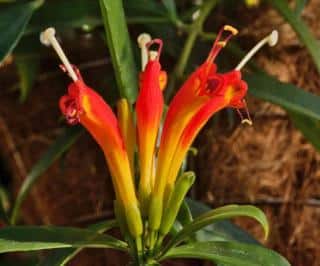 Water regularly but not too much between May and September-October.
Water regularly but not too much between May and September-October.Aeschynanthus need fertilizer during the entire vegetation phase, from May to September.
This will ensure you have a beautiful blooming during this entire period.
Early September, slowly stop adding the fertilizer and stop it completely in October.
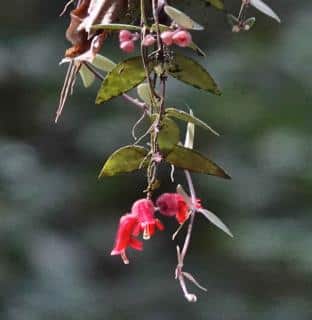
Once there are no more leaves left, transfer your aeschynanthus to a cool, shaded and rather dry spot.
Ideal temperatures for this rest phase are around 57 to 60°F (13 to 15°C).
At the end of winter, repot the tuber in new soil mix and begin watering regularly again.
As soon as the first buds appear, water abundantly and there you go, your aeschynanthus is ready for a new cycle of blooming.
Native to Asia and more specifically the tropical areas of China, India and Malaisia, Aeschynanthus thrives indoors particularly well in our temperate climates where it bears abundant flowers from May to September. Many varieties are trailing and hanging, making them perfect for an indoor suspension or to decorate a rock wall.
Although we would of course like its blooming to last longer, it’s already a great joy to see the beauty of its bright red or orange red flowers.
Caring for it is relatively easy if the guidelines mentioned above are properly followed.
Quite vulnerable to aphids, one solution is to plant 1 or 2 cloves of garlic at the foot of your plant to repel them.